How to Make Graphic Design Project
This article guides you through crafting effective graphic design project briefs, including essential free and paid tools, with insightful background information.
Overview Different Graphic Design Types
When it comes to graphic design projects, it is essential to understand the different types of graphics and the software tools available. Graphic design can be categorized into three main types: raster graphics, vector graphics, and 3D graphics.
In addition to the wide range of graphic design options available, it's worth noting that your project or company may already have some existing graphic assets that can help inform the style of future work. These assets can serve as a foundation for maintaining consistency and branding throughout your projects.
There are several types of graphic design, which can be divided into three main categories:
Raster graphics, also known as bitmap graphics, are made up of pixels arranged in a grid. They are typically used for photographs and digital images. Examples of raster graphic programs include Adobe Photoshop , GIMP, and PaintShop Pro.
Vector graphics, on the other hand, are made up of mathematical equations that define shapes and lines. They are typically used for logos, illustrations, and diagrams. Examples of vector graphic programs include Adobe Illustrator , CorelDRAW, and Figma.
3D graphics are digital representations of three-dimensional objects and scenes. They are typically used for animation, film, and video game production. Examples of 3D graphic programs include Autodesk Maya, Blender , and Cinema 4D.
The advancements in generative AI image tools have opened up new possibilities for graphic design, empowering designers to leverage intelligent algorithms and automation. AI can streamline processes, enhance creativity, and provide designers with innovative solutions for their projects. With AI, graphic designers can explore new horizons and push the boundaries of their imagination, making the most out of this exciting technological opportunity.
A basic formula of 'subject + style + details + format of output' will get you started creating AI images. Keep adding more detail to get better results. This approach not only enhances the creative process but also ensures that designers harness the full potential of AI in generating visually stunning and unique designs.
Generative AI Tools

dALL-E is a free AI tool for creating unique graphic designs. It is powered by OpenAI's state-of-the-art language model, and allows users to generate illustrations by simply describing them in natural language. With dALL-E, anyone can create professional-looking illustrations without any design experience.
Google rank: 9.0
Midjourney is a free AI tool for creating unique graphic designs. It uses advanced Artificial Intelligence algorithms to generate illustrations and designs, and allows users to simply input a text or a concept to create professional-looking illustrations without any design experience. With Midjourney, anyone can create professional-looking illustrations quickly and easily.
Google rank: 8.7
Goals and Objectives
Graphic designers aim to communicate an idea through visual elements like color, imagery, and layout. They prioritize creating designs that are visually appealing, engaging, and effective for the target audience. They also ensure that designs are user-friendly and responsive across different platforms and screen sizes. Graphic designers tailor their designs to the context and purpose of the project, choosing appropriate elements and techniques. Their objectives include creating designs that are visually appealing, effective in communication, functional, and contextually appropriate.
When developing web design, the focus may be on creating an intuitive user interface and optimizing user interaction with the website. In illustration, the goal may be to convey a specific emotion or message through the image. Infographics may be used to present complex information in a clear and concise manner, while product design aims to develop products that combine functionality and aesthetics.Logo design centers around creating a unique and memorable visual identity for a brand.
In the realm of graphic design, establishing clear objectives and goals is paramount to the success of any project. Objectives serve as the overarching purpose, guiding the project's direction, while goals provide specific, measurable targets to work towards. Here's a comprehensive guide on setting objectives and goals for a graphic design project:
Define the Project's Purpose and Scope:
- Objective: Clearly articulate the purpose of the graphic design project, whether it's creating a brand identity, designing a website, or developing product packaging.
- Goals: Specify the scope by identifying key deliverables, target audience, and the desired impact of the design.
Here are some common examples of objectives and goals for a graphic design project:
2. Develop a Unique Visual Identity:
- Objective: Establish a distinctive visual identity for the brand or project.
- Goals: Create a memorable logo, define a consistent color scheme, and choose typography that aligns with the brand's personality.
3. Enhance User Experience (UX) in Web Design:
- Objective: Optimize user interaction and navigation on the website.
- Goals: Develop an intuitive user interface, ensure responsiveness across devices, and strategically place clear calls-to-action for enhanced user engagement.
4. Convey Emotion and Message in Illustration:
- Objective: Evoke specific emotions or convey a particular message through visual elements.
- Goals: Craft illustrations that resonate with the intended audience, using color, composition, and style to effectively communicate the desired emotion or message.
5. Present Complex Information with Infographics:
- Objective: Simplify complex information for easy understanding.
- Goals: Design visually appealing infographics that present data in a clear and concise manner, making information easily digestible for the audience.
6. Craft Visually Striking Packaging Design:
- Objective: Create packaging that stands out on store shelves.
- Goals: Use high-quality images, incorporate branding elements, and ensure that the design accurately represents the product, enticing potential customers.
7. Ensure Functionality and Aesthetics in Product Design:
- Objective: Develop products that seamlessly blend functionality and aesthetics.
- Goals: Create product designs that not only look visually pleasing but also meet practical needs, enhancing the overall user experience.
Measurable Result
The results of digital projects are often measured using the "triple constraint" of price, quality, and time. This means that the cost, level of quality, and completion time of a project are all taken into consideration when evaluating its success. In the internet world, this is often done by measuring the number of tasks or files in relation to their price, quality, and completion time. Each task is typically placed into a "milestone" that incorporates the triple constraint. It's important to note that the type of work and the level of competence of the customer can affect how easily it can be measured.
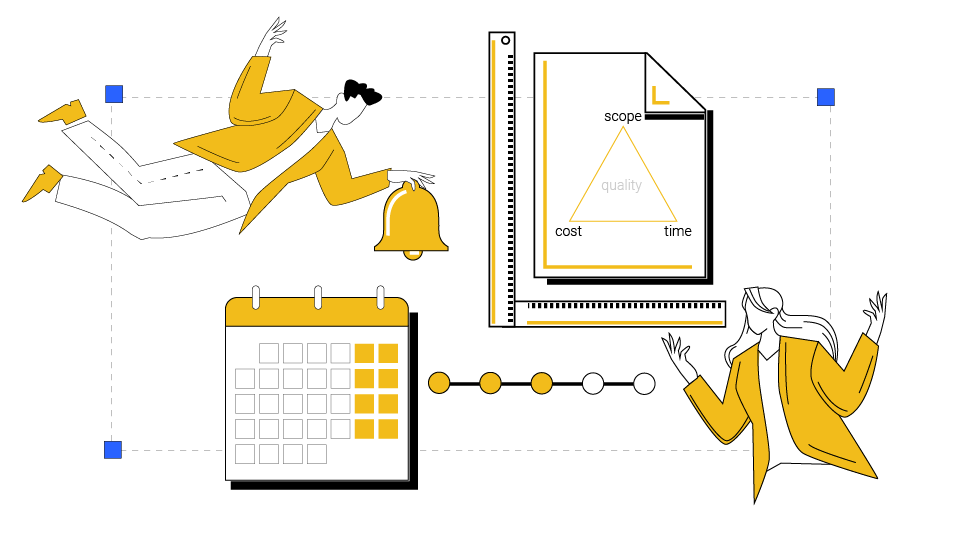 Creative work is often more difficult to measure than physical work, so it's important to approach measurement with care. Additionally, the size and complexity of the project can also play a role in how easy it is to measure. To stay on track and ensure that deadlines are met, it's important to establish a schedule early on and clearly communicate deadlines to all parties involved. Be aware that changes may occur as the project progresses.
Creative work is often more difficult to measure than physical work, so it's important to approach measurement with care. Additionally, the size and complexity of the project can also play a role in how easy it is to measure. To stay on track and ensure that deadlines are met, it's important to establish a schedule early on and clearly communicate deadlines to all parties involved. Be aware that changes may occur as the project progresses.
3 Types of Measurable Objectives To Track as a Freelancer
Whether you’re a one-person freelance company or have a team that you work with, goals are imperative in terms of providing direction for your company. Goals can be around revenue growth, customer satisfaction, or just about anything associated with improving your business long-term. Once set, you need to establish measurable objectives supporting them. The article How to Set Goals does a great job of explaining goals and what criteria should be used when setting supporting objectives.
Read moreExamples of Measurable Goals and Objectives

Do you often find yourself setting out big plans, only to fall flat and push the plan aside? This is a common occurrence. Luckily, there exists a well-defined solution that's easy to follow. It comes in a detailed system of measurable goals and objectives that puts you on a path to success.
Read moreGraphic Design References
Incorporating references into the design process can provide several benefits for the designer and the overall project:
- Understanding the Target Audience: By examining existing designs and examples, the designer can develop a better understanding of the target audience and the market. This insight helps in creating a design that resonates with the audience and aligns with their preferences and expectations.
- Gaining Insights from Past Successes and Failures: References allow the designer to learn from past design successes and failures. By analyzing what has worked well in similar projects, the designer can apply those principles and strategies to create an effective design. Likewise, understanding what hasn't worked can help avoid potential pitfalls and design flaws.
- Saving Time and Reducing Errors: Building upon existing ideas and references can save time in the design process. Instead of starting from scratch, the designer can leverage existing concepts and make necessary adjustments and improvements. This approach reduces the risk of errors and design flaws, as the designer can learn from the successes and failures of previous designs.
- Improving Efficiency and Quality: Incorporating references can lead to a more efficient design process. By leveraging existing ideas and concepts, the designer can focus on refining and enhancing the design rather than starting from a blank canvas. This approach often results in a higher quality end product as it builds upon proven design principles.
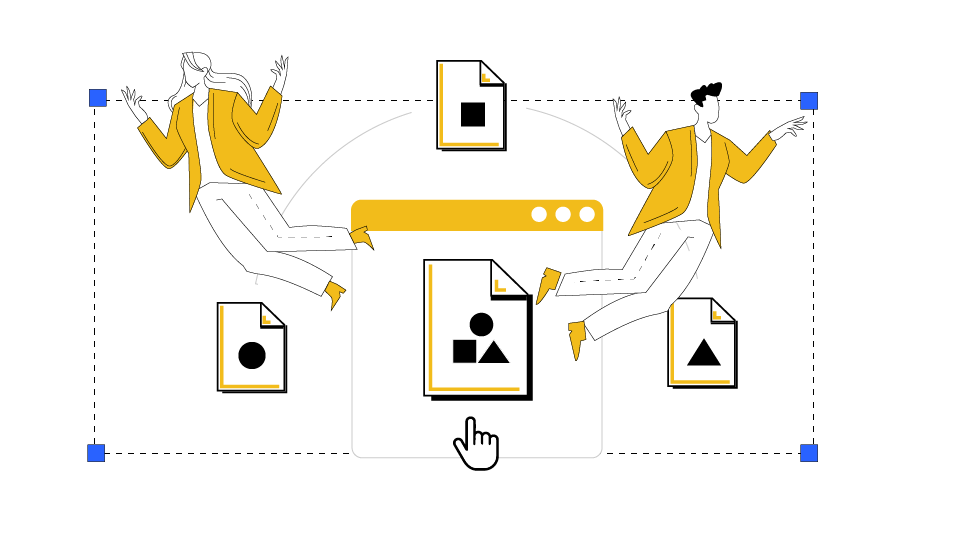
References serve as valuable resources that inspire, guide, and inform the design process. By utilizing existing designs and examples, designers can create designs that are not only visually appealing but also resonate with the target audience and meet the client's objectives.
Best websites with graphic design references
Behance is a social media platform owned by Adobe whose main focus is to showcase and discover creative work. Behance was founded by Matias Corea and Scott Belsky in November 2005. It was acquired by Adobe in December 2012. As of October 2020, Behance had over 24 million members.
Google rank: 4.4
Pinterest is an image sharing and social media service designed to enable saving and discovery of information on the internet using images, and on a smaller scale, animated GIFs and videos, in the form of pinboards.
Google rank: 6.4
Dribbble is a self-promotion and social networking platform for digital designers and creatives. It serves as a design portfolio platform, jobs and recruiting site and is one of the largest platforms for designers to share their work online.
Google rank: 9.4
Graphic Design Budget
One common method for budgeting graphic design projects is to use a combination of a fixed price and an hourly rate.
When it comes to budgeting for a graphic design project, there are different approaches that can be used, such as a fixed price or an hourly rate. Here are some key points to consider:
- Fixed Price: With a fixed price, the designer and client agree on a specific amount that will be paid for the entire project, regardless of the number of hours spent. This method is commonly used for smaller projects or projects with a well-defined scope of work.
- Hourly Rate: Using an hourly rate, the designer and client agree on a specific rate that will be paid for each hour of work. This method is often used for larger projects or projects with a less defined scope of work. The hourly rate should be based on the designer's experience, expertise, and the cost of living in their area.
- Combination Approach: It is also possible to use a combination of fixed price and hourly rate for a project. For example, certain stages of the project can have a fixed price, while the remaining stages are billed at an hourly rate. This approach can be beneficial for larger projects that have a defined scope of work initially but may require additional work as the project progresses.
When forming a budget for a graphic design project, it's important to consider other expenses beyond the designer's compensation. This includes software, hardware, and any additional resources that may be required. It's also essential to estimate the time needed to complete the project and factor in contingencies for unexpected issues or delays.
Clear communication with the client is crucial for effective budgeting. Open and honest discussions about the project's scope, expectations, and budget are necessary. By using a combination of fixed price and hourly rate when appropriate and being transparent about all the costs involved, both the designer and the client can ensure that the project is properly budgeted, and fair compensation is provided for the work.
Freelancer services have a lot of workers with different skills and cost per hour for close estimation market cost:

Upwork connects businesses with independent professionals and agencies around the globe. Where companies and freelancers work together in new ways that .
Google rank: 4.4
Join the thousands of entrepreneurs who are launching their contests every week and harnessing the awesome power of crowdsourcing.
Google rank: 4.4
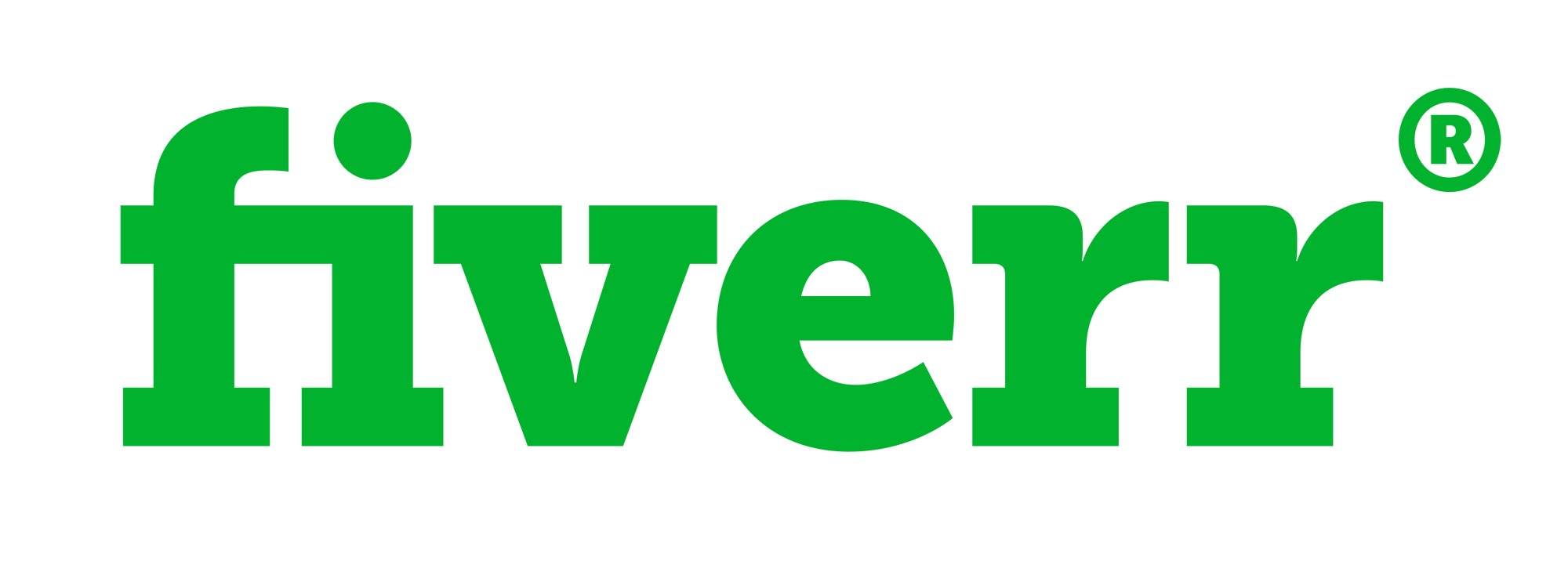
Another staple competitor analysis tool for SEO is Ahrefs’ site explorer, which allows you to check any URL’s top organic keywords. Additionally, you get a rough estimate of how much traffic a competitor receives on those keywords.
Google rank: 4.4
How to Make a Custom Graphic Design Budget [With Template]

Building a budget for custom graphic design services will likely require an assortment of line items and prioritization. Despite the work you may need to put in, the planning phase will make your project run smoothly and successfully. Download our custom graphic design budgeting template to facilitate the process.
Read moreHow to build a graphic design budget

How much should graphic design cost? Tricky question. You’re bound to get dizzy seesawing between the extremes that some designers and agencies charge. For every designer who charges $300 for a full website design, there’s someone else who bills in the tens of thousands. You’ll also quickly realize that high prices don’t always equal high quality.
Read moreTarget Audience
Defining your target audience is crucial for creating effective graphic design that resonates with them. Look for specific insights about your audience to inform your design choices. Identify the audience for your project and describe their characteristics, such as age, gender, income level, marital status, or degree of education. Additionally, take note of their values, interests, requirements, and wants. Determine if you are targeting current or potential customers. The more you know about your audience, the better equipped you will be to create designs that speak to them.
Consider using a shortened version of your audience analysis and focus on three main parameters:
Geography: where your audience is located or interested in
Demography: Characteristics such as gender, age, marital status, education, lifestyle, average income per month, car ownership and other social characteristics.
Psychography: interests and problems that your audience has.
By understanding these key elements of your audience, you can create graphic designs that effectively communicate your message and reach your target audience.
How to Identify the Best Target Audience for Graphic Designers

In the marketing world, graphic designers can make a big difference by developing campaigns that really hit home with the target audience. When integrated properly, graphic design and search engine optimisation (SEO) can produce impressive results for your digital advertising campaign. There is so much more to SEO than just keywords and creating links. Your Google PageRank will be mostly determined by the quality of your graphics, writing, and overall structure. If you want to know how to play your cards right, read this article.
Read moreMessaging and Tone
When gathering information about the client's brand identity preferences, it is important to learn more about their desired brand personality and visual style. Consider asking the following questions:
Brand Personality:
- Is the client upscale, supportive, amiable, tech-savvy, or down to earth?
- Do they want to come across as brash and powerful or approachable?
Color Preferences:
- What shades does the customer prefer or dislike?
- Do they want to stand out from the competition, who may utilize blue and green?
- Are there any specific colors the CEO detests (e.g., purple)?
Typography Preferences:
- Which fonts do they prefer?
- Do they like formal fonts that convey seriousness or scripty, handwritten ones that convey playfulness and friendliness?
Photography Style:
- Is the photography they're utilizing artistic or professional?
Creating a mood board can be a helpful approach to gather inspiration and align with the client's preferences. You can use tools like Pinterest or physical materials such as magazine cutouts, paint store color samples, scraps of cloth, or postcards. Consider adding typefaces or other type treatments after establishing a color palette. Look for images that depict the client's ideal customer, similar to styling a place or putting together an outfit.
Conclusion
In the world of graphic design, where diverse tools and approaches are available, the choice between independent creativity and collaboration with professionals is a complex decision that requires careful consideration. The use of artificial intelligence, templates, free tools, as well as collaboration with freelancers and agencies has its own pros and cons.
1. Use of Artificial Intelligence and Templates:
1.1 Pros:
- Efficiency and speed: Artificial intelligence and templates allow for quick and effective design creation.
- Accessibility: A wide range of templates and tools is available to users with varying levels of experience.
1.2 Cons:
- Lack of uniqueness: Using mass templates can lead to standardization and loss of individuality.
- Limited creative possibilities: AI tools may not always execute complex ideas and concepts.
2. Free Tools and Freelance Platforms:
2.1 Pros:
- Budget savings: Using free tools and freelancers can be more financially accessible.
- Diversity of styles: Freelancers offer a variety of styles, allowing for a suitable solution for the project.
2.2 Cons:
- Quality instability: The quality of freelancers' work may vary, posing a risk of less satisfactory results.
- Communication challenges: Working with remote freelancers may sometimes lead to difficulties in communication and understanding client requirements.
3. Collaboration with Professionals:
3.1 Pros:
- Expert mastery: Graphic design professionals have the expertise to create unique projects.
- AI in experienced hands: Professionals successfully integrate AI tools, ensuring a higher level of results.
3.2 Cons:
- High costs: Professional services can be expensive, especially for small businesses or startup entrepreneurs.
- Time consumption: The process of working with professionals may take more time compared to independent creativity or working with freelancers.
Nevertheless, it is worth noting that graphic design professionals successfully integrate modern technologies, including artificial intelligence, into their work. This allows them not only to increase efficiency but also to create unique and high-quality projects. Thus, even when collaborating with professionals, you gain the benefits of modern technologies.
In the end, the choice depends on your goals, budget, and expectations for the project. Whether you decide to create independently, collaborate with freelancers, or choose experience
For those seeking more detailed information on specific types of work such as graphic design, video production, audio editing, programming, copywriting, and marketing, a valuable resource is available. You can explore a diverse array of project briefs by visiting Project briefs categories. This website provides detailed guidance on approaching each type of work, recommending suitable tools and techniques, and offering valuable tips and insights. Whether you are an experienced professional or a newcomer in these fields, these briefs can help enhance your skills and keep you abreast of the latest trends and best practices.
Logo design
By Marc Hemeon | 02.05.2022A logo is a symbol made up of text and images that identifies a business. A good logo shows what a company does and what the brand values. Logo design is all about creating the perfect visual brand mark for a company.
Learn more
3 steps to the perfect logo design brief
By Matt Ellis| May 26, 2022
The logo design brief tells designers what kind of logo to design, with all the necessary details and background information. Writing this logo design description is the first step in getting the perfect logo for your brand.
Web design
By Andy Collins | 12.05.2022Web design encompasses many different skills and disciplines in the production and maintenance of websites. The different areas of web design include web graphic design; user interface design; authoring, including standardised code and proprietary software; user experience design; and search engine optimization.
Learn more
How to Write a Great Website Brief + Free Template
By Matan Naveh | 11.05.22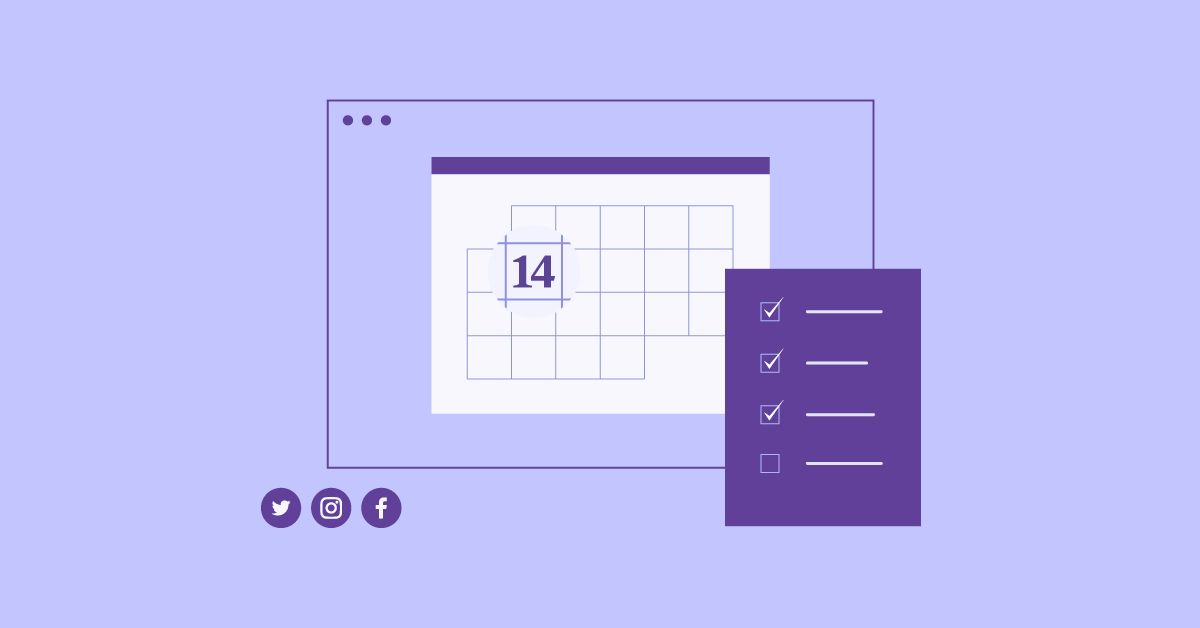
A good website design brief is paramount to a successful web design project. Make sure that your project is a success with a well-crafted design brief.
Example Web Design Project Brief
By twine.net | July 20, 2021
Are you looking to hire a web designer? Visit our freelance marketplace to post up a job, and have top-quality web designers contact you with their rates.
Product design
By Andy Collins | 12.05.2022Product design takes the form of a pamphlet or flyer that is used to distribute information about something. Brochures allow businesses to introduce new products and services to existing customers or increase their reach by advertising to new prospects.
Learn more
How to write an effective product design brief
By Ben Mazur | 26.11.2019
Writing a good product design brief is the secret to the success of any product design project. It ensures that the success criteria for the product are understood by everyone involved from the outset and it serves as reference point for evaluating design concepts against user needs. It provides confirmation that you have reached a suitable design solution. Being able to write an effective product design brief is an important skill for any design manager and is especially important when aligning different teams on the overall goal of a project.
The Product Design Brief
By Kelsey Campbell-Bones | March 9, 2022A product design brief or ‘product spec’ outlines the main goals of a feature or product to be worked on by a product team. It should contain the key information that the team needs to know to ensure the thing they create meets all the needs of the brief. The document should outline the success criteria for that feature or product and be the barometer against which the future design is checked. It may include things like user stories or KPIs but may also be slightly vague and in need of more research to flesh out the scope.
Infographic
By Andy Collins | 12.05.2022An infographic is a collection of imagery, data visualizations like pie charts and bar graphs, and minimal text that gives an easy-to-understand overview of a topic. As in the example below, infographics use striking, engaging visuals to communicate information quickly and clearly.
Learn more
How to Write an Infographic Design Brief
By Kai Tomboc | September 28, 2018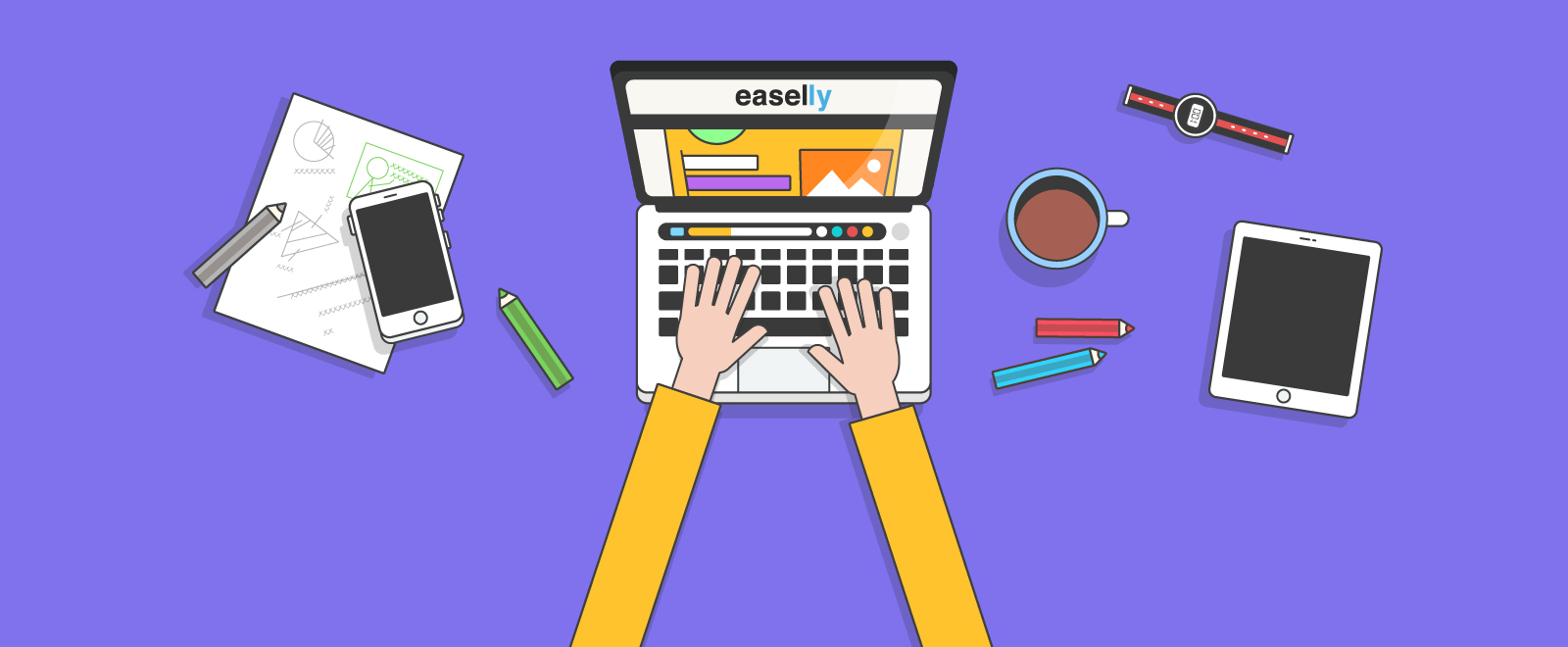
You’ve probably stumbled upon infographics that undoubtedly nailed it in terms of engagement and shareability. Creatives and marketers call these pieces as content home runs.
How to Write an Infographic Brief
By infographica.co.uk | FEBRUARY 8, 2017
Start your brief by describing the topic or concept of your infographic and the audience you’re trying to reach. This will help the designer understand what the infographic will be about, who it is intended for. It’s almost impossible to come up with a great design when the purpose of the project isn’t clear.
illustration
By Nicolene Louw | 22.05.2022In print and digital published media such as posters, flyers, magazines, books, educational materials, animations, video games, and films, illustrations are decorations, interpretations, or visual explanations of a text, concept, or process.
Learn more
Example Illustration Project Brief
By Vicky | January 12, 2017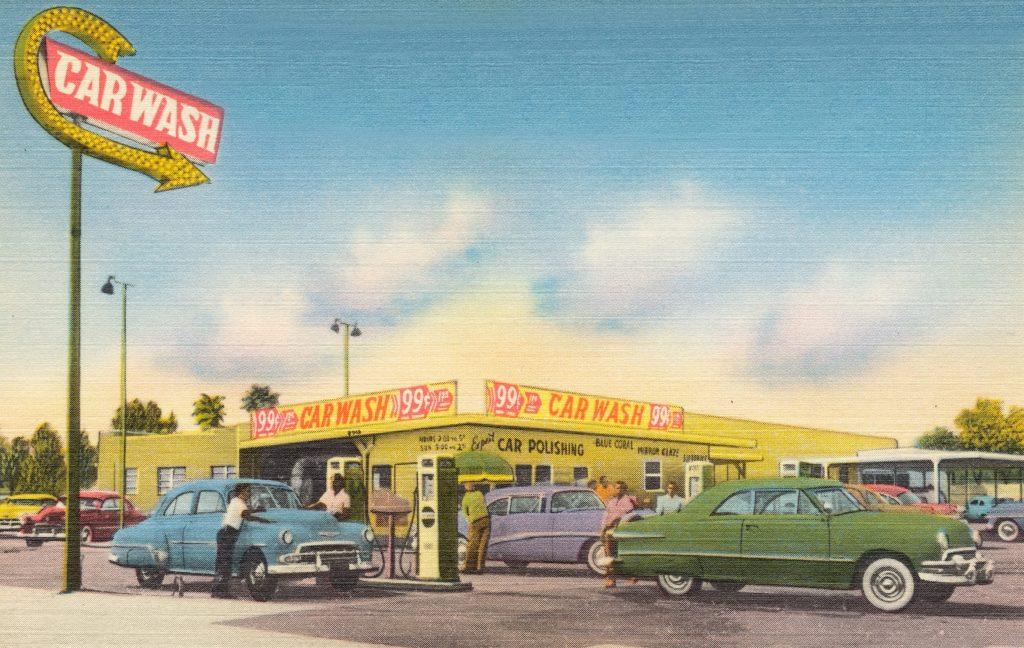
What comes with the illustration practice? What kind of illustration templates should I be using when creating a brief structure for my creative freelancer?

